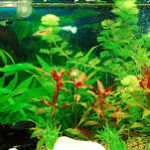Curls are a beautiful and unique hair texture that many people cherish. However, maintaining healthy curls can be a challenge, especially when heat styling is involved. Heat tools like flat irons, curling wands, and blow dryers can transform curls into sleek, straight styles or enhance their natural shape, but they also come with risks. Excessive or improper use of heat can lead to dryness, breakage, and even permanent damage to the hair’s structure. For those with curly hair, which is naturally more prone to dryness, the stakes are even higher.
This article is divided into four parts, each focusing on a crucial aspect of protecting curls while using heat styling tools. The first part will explore the science of curly hair and why it is more vulnerable to heat damage. The second part will discuss the importance of preparation before heat styling, including the role of heat protectants and proper hair care routines. The third part will delve into the best practices for using heat tools safely, including temperature settings and techniques. Finally, the fourth part will cover post-heat styling care, emphasizing how to restore moisture and maintain healthy curls after heat exposure.
By following these guidelines, individuals with curly hair can enjoy the versatility of heat styling without compromising the health and integrity of their curls.
Understanding Curly Hair and Its Vulnerability to Heat
The Science Behind Curly Hair
Curly hair is structurally different from straight hair. Each strand of curly hair has an oval or irregular shape, which causes it to bend and curl as it grows. This shape also makes curly hair more prone to dryness because the natural oils produced by the scalp have a harder time traveling down the hair shaft. Additionally, the cuticle layer of curly hair is often raised, making it more susceptible to damage from external factors like heat, humidity, and friction.
Understanding the unique structure of curly hair is essential for recognizing why it requires special care. Unlike straight hair, which has a smooth cuticle layer that lies flat, curly hair’s raised cuticle allows moisture to escape more easily. This lack of moisture can lead to brittleness and breakage, especially when heat is applied.
Why Heat Styling Can Be Damaging
Heat styling tools work by breaking down the hydrogen bonds in the hair, which temporarily alters its shape. While this process allows for versatile styling, it can also weaken the hair’s protein structure if done excessively or at high temperatures. For curly hair, which is already more fragile due to its structure, this can lead to significant damage.
High temperatures can strip the hair of its natural moisture, leaving it dry and prone to split ends. Over time, repeated heat exposure can cause the hair to lose its elasticity, making it more likely to break. In severe cases, heat damage can even alter the hair’s natural curl pattern, leaving it limp and lifeless.
The Importance of Knowing Your Hair Type
Not all curls are the same. Hair types range from loose waves (Type 2) to tight coils (Type 4), and each type has different needs when it comes to heat styling. For example, Type 2 hair may tolerate moderate heat better than Type 4 hair, which is more delicate and requires extra care. Understanding your specific hair type is crucial for determining the right heat settings and protective measures.
By recognizing the unique characteristics of curly hair and the risks associated with heat styling, individuals can take proactive steps to protect their curls. The next part of this article will explore how to prepare curly hair for heat styling, ensuring that it remains healthy and vibrant.
Preparing Curly Hair for Heat Styling
The Role of Heat Protectants
One of the most important steps in protecting curly hair from heat damage is using a heat protectant. These products create a barrier between the hair and the heat, reducing the risk of moisture loss and protein damage. Heat protectants come in various forms, including sprays, creams, and serums, and they often contain ingredients like silicones, oils, and polymers that coat the hair shaft.
When choosing a heat protectant, it’s important to look for one that suits your hair type and texture. For example, those with fine curls may prefer a lightweight spray, while those with thicker, coarser curls may benefit from a richer cream. Applying a heat protectant evenly throughout the hair before using any heat tools is a simple yet effective way to minimize damage.
Cleansing and Conditioning
Properly cleansing and conditioning the hair is another essential step in preparing for heat styling. Curly hair tends to be drier than other hair types, so using a moisturizing shampoo and conditioner can help restore and retain moisture. It’s also important to avoid over-washing, as this can strip the hair of its natural oils.
Deep conditioning treatments are particularly beneficial for curly hair, as they provide intense hydration and strengthen the hair’s protein structure. Using a deep conditioner once a week can help repair any existing damage and make the hair more resilient to heat. Additionally, incorporating a leave-in conditioner into your routine can provide extra moisture and protection.
Detangling with Care
Detangling curly hair before heat styling is crucial, but it must be done gently to avoid breakage. Using a wide-tooth comb or a detangling brush can help remove knots without causing unnecessary stress to the hair. It’s also helpful to detangle the hair while it’s damp and coated with conditioner, as this reduces friction and makes the process easier.
By taking the time to properly cleanse, condition, and detangle the hair, individuals can create a strong foundation for heat styling. This preparation not only minimizes damage but also ensures that the hair looks its best after styling. The next part of this article will focus on the best practices for using heat tools safely and effectively.
Best Practices for Using Heat Tools
Choosing the Right Tools
Not all heat tools are created equal, and choosing the right ones can make a significant difference in protecting curly hair. Ceramic and tourmaline tools are often recommended because they distribute heat more evenly and reduce the risk of hot spots. Additionally, tools with adjustable temperature settings allow for greater control, which is essential for minimizing damage.
When selecting a heat tool, it’s also important to consider the size and shape. For example, a flat iron with wider plates may be more efficient for straightening thick, curly hair, while a smaller curling wand may be better for creating defined curls. Investing in high-quality tools may require a larger upfront cost, but it can save money in the long run by reducing the need for frequent replacements and hair repairs.
Setting the Right Temperature
The temperature at which heat tools are used plays a critical role in preventing damage. While it may be tempting to crank up the heat for faster results, high temperatures can be extremely damaging to curly hair. Most experts recommend keeping the temperature below 400°F (204°C) for curly hair, with lower settings being ideal for finer or more delicate curls.
It’s also important to avoid using heat tools on wet or damp hair, as this can cause the water in the hair to boil, leading to bubbles in the hair shaft and potential breakage. Always ensure that the hair is completely dry before applying heat.
Techniques for Safe Styling
Using heat tools correctly is just as important as choosing the right ones. When straightening curly hair, it’s best to work in small sections and pass the flat iron over each section no more than once or twice. Repeatedly passing the iron over the same section can cause excessive damage.
For curling, wrapping small sections of hair around the wand and holding it for a few seconds can create beautiful, long-lasting curls without overexposing the hair to heat. It’s also helpful to avoid clamping the hair too tightly with curling irons, as this can create creases and weaken the hair.
By following these best practices, individuals can achieve their desired styles while minimizing the risk of heat damage. The final part of this article will discuss how to care for curly hair after heat styling, ensuring that it remains healthy and vibrant.
Post-Heat Styling Care
Restoring Moisture
After heat styling, it’s essential to restore moisture to the hair. Heat can strip the hair of its natural oils, leaving it dry and brittle. Using a hydrating mask or deep conditioner can help replenish lost moisture and repair any damage. These treatments should be used at least once a week, or more frequently if the hair is particularly dry.
In addition to deep conditioning, incorporating a leave-in conditioner or hair oil into your routine can provide ongoing hydration. These products can be applied to damp or dry hair, depending on the instructions, and they help seal in moisture and protect the hair from environmental stressors.
Avoiding Over-Styling
While heat styling can be a great way to switch up your look, it’s important to avoid over-styling. Constantly subjecting curly hair to high temperatures can lead to cumulative damage over time. To give your hair a break, consider incorporating heat-free styling methods, such as braiding, twisting, or using flexi-rods, into your routine.
On days when heat styling is necessary, try to limit the use of multiple tools. For example, if you’re using a flat iron, avoid also using a curling iron on the same day. This reduces the overall heat exposure and gives your hair a chance to recover.
Regular Trims
Regular trims are an essential part of maintaining healthy curls, especially after heat styling. Heat damage often manifests as split ends, which can travel up the hair shaft and cause further breakage if left untreated. Getting a trim every 6-8 weeks can help remove damaged ends and keep the hair looking fresh and healthy.
In between trims, using a bonding treatment or protein mask can help strengthen the hair and prevent split ends. These treatments work by repairing the hair’s protein structure, making it more resilient to future damage.
Embracing Natural Curls
Finally, it’s important to embrace and celebrate your natural curls. While heat styling can be a fun and versatile way to express yourself, it’s equally important to care for your hair in its natural state. Using products specifically designed for curly hair, such as curl creams and gels, can help enhance your natural texture and reduce the need for heat styling.
By following these post-heat styling care tips, individuals can maintain healthy, vibrant curls while still enjoying the benefits of heat styling. With the right preparation, tools, and aftercare, it’s possible to protect your curls and keep them looking their best.
Conclusion
Protecting curly hair while using heat styling tools requires a combination of knowledge, preparation, and care. By understanding the unique structure of curly hair and its vulnerability to heat, individuals can take proactive steps to minimize damage. Preparing the hair with heat protectants, proper cleansing, and conditioning creates a strong foundation for safe styling. Using high-quality tools and techniques further reduces the risk of harm, while post-styling care ensures that the hair remains healthy and hydrated.
Ultimately, the key to protecting curls lies in balance. While heat styling can be a valuable tool for achieving different looks, it’s important to prioritize the health of your hair. By following the guidelines outlined in this article, individuals with curly hair can enjoy the versatility of heat styling without compromising the integrity of their curls. With the right approach, it’s possible to have the best of both worlds: beautiful, styled hair and healthy, vibrant curls.










